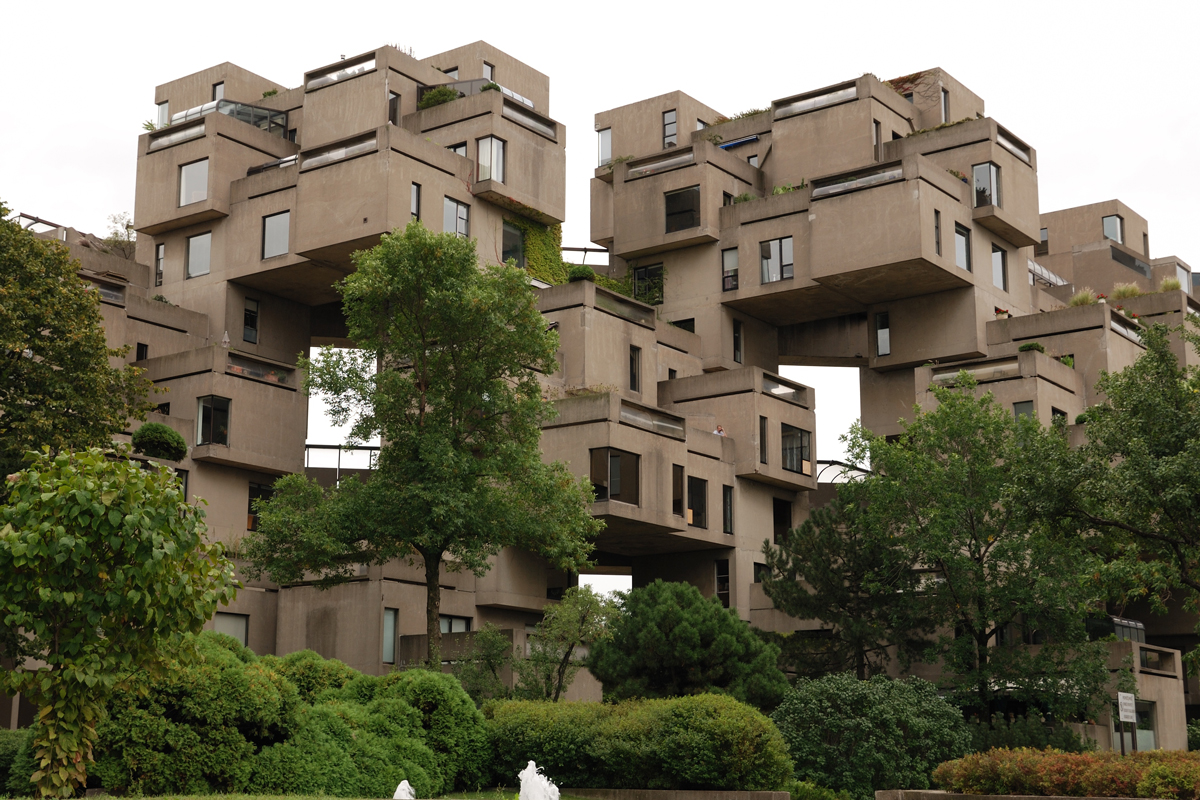
Moshe Safdie’s Brutalist design of Habitat 67 is credited by Blake Gopnik for rekindling our love of concrete.
“Habitat is a prime example of our postwar love of raw concrete architecture. For a little while, from the late 1950s to the early ’70s, concrete seemed to be the civic, public alternative to the steel and glass buildings that represented the corporate world, Mad Men-slick and meant to sell us on the polished ease of the capitalist way, reflected back and forth across the hall of mirrors of New York’s Park Avenue.
Poured concrete, in contrast, was honest and audacious in avowing its bulk, primeval and pretense-free for an age that still doubted the perfection of the new corporate model and sometimes pushed back against it. It became the preferred material for libraries, universities and courts, in a style that has now come to be known as Brutalism.
…If only those Brutalist structures could have held on just a bit longer. The style’s charms are being rediscovered. If it is true that imitation is the sincerest form of flattery, then Habitat’s concrete should be blushing.” – Blake Gopnik, New York Times
Read more ↓
Growing Up in a Concrete Masterpiece, New York Times
Image courtesy of ↓
Wladyslaw, Wikimedia Commons